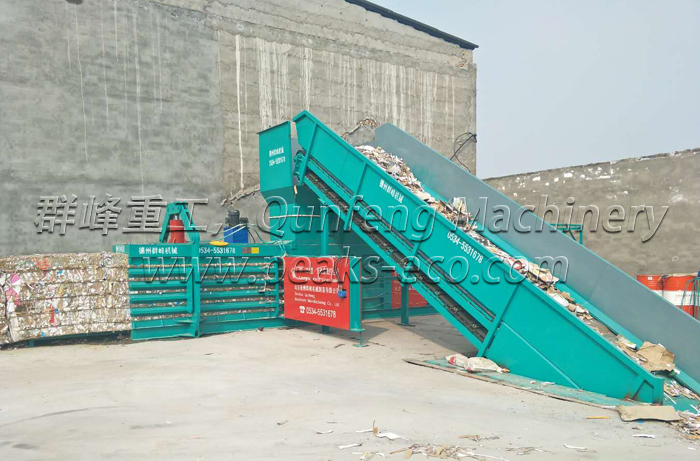History Of Balers
The baler machine is a device used to compress solid industrial waste or recyclable materials (such as paper, plastic, foam, cans, etc.) to achieve better material handling and storage. Eliminating the empty space between individual items of these bulk products is a good way to save storage and transportation costs.
The packaging of agricultural products and waste is not only to reduce space but also to help preserve its intrinsic value. Animal feed is a product used to raise livestock rather than foragings, such as hay, grass, and straw. Animal feed is not only bulky but also perishable. The ideal animal feed quality is a large amount of energy and protein to meet the nutritional needs of raising livestock. This is solved by drying and molding. Moreover, as the feed deteriorates, the heat generated can cause spontaneous combustion.
The baler helps to control the moisture content of the feed. Too little water will cause the hay to dry out and lose its nutritional value; too much will cause deterioration and burn. Baled animal feed is usually wrapped in plastic sheeting or lids to help retain moisture.
Industrial balers have improved the handling of materials mainly used in recycling facilities. The baler makes the material smaller, denser, heavier, and stackable. This improves the efficiency of dragging items and produces greater economic benefits. In addition, recycling the bundled products significantly improves the throughput rate due to easier feeding. This reduces operating costs.
The baler is used to bale bulk pickups of recyclable materials such as cardboard, paper, plastic, and metal. These machines compress recyclables into compact bags that can be easily stacked and transported for recycling. The balers are available in different sizes to suit your business needs.
History of balers
Balers were first introduced in the 1930s to help farmers manage the size of haystacks. Before the advent of automatic balers, hay was cut by hand and then collected into haystacks with rakes and forks. It cannot be too large to promote heating and combustion, and it cannot be too small to promote drying and degradation.
The first automatic baler machine was a circular baler, called a rotary baler, which was launched by Allis Chalmers in 1947. Other types of balers have also appeared, such as rectangular and small square balers. Both are used in agriculture.
The early scrap baler was a compactor patent filed by MS Wells in 1941 as a means of compacting oil tanks. By the 1970s, these devices were further developed, using water pressure from water pipes to compress domestic waste.
The baler is used to bale bulk pickups of recyclable materials such as cardboard, paper, plastic, and metal. These machines compress recyclables into compact bags that can be easily stacked and transported for recycling. The balers are available in different sizes to suit your business needs.
The benefits of using a baler include:
1. Minimize the time for managing materials.
2. Needless space to put the recycling bin, creating a cleaner working environment.
3. Increase the number of materials that your business can recycle, thereby reducing waste disposal costs.
4. It is convenient to handle and repair the baled materials.
